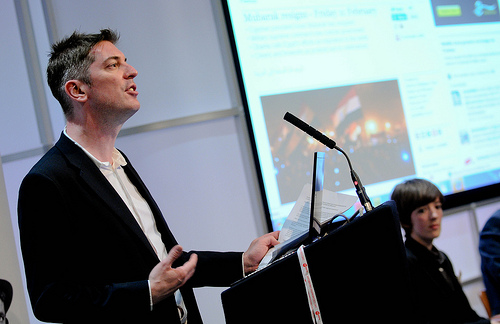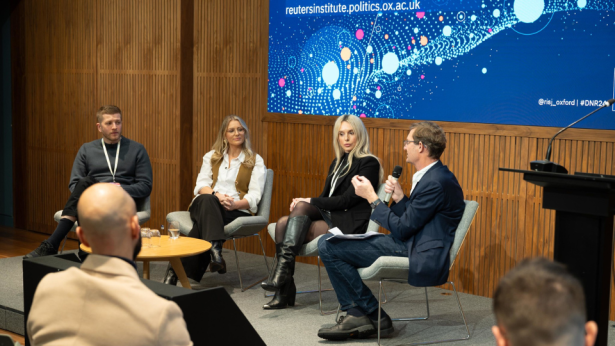
Far from being the death of journalism it is almost as if the liveblog is the new home page, it is central to the coverage and signposts to the rest of the coverage, according to Matt Wells, blogs editor of the Guardian.
Liveblogs are Twitter for people not on Twitter, panelists agreed in the fourth and final session at news:rewired – noise to signal, who demonstrated that liveblogging has not been killed by Twitter, as has been claimed.
Matt Wells, blogs editors, the Guardian responded to criticism that suggested journalism should only follow the the tried and tested format of a news story.
The inverted triangle is the single reason why journalism is so mistrusted and the search for the top line encourages sensationalism, Wells said
Liveblogs are good for stories that don’t have a beginning and an end, Wells explained, and cited the example of Hosni Mubarak’s resignation from the Egyptian presidency.
“Liveblogs can’t be printed, you can’t broadcast them on television or on a radio station. They only work on a digital screen.
“It’s the only format that has developed specifically for the digital media,” Wells said.
He responded to Tim Montgomery’s claim that “Twitter has killed live blogging,” giving this as a reason for not live blogging the AV vote.
So what is next for the Guardian’s live blogs? Wells said the team is working on ways to better signpost liveblogs, better navigation and to make it “easier to get out of if you don’t want to be there”.
Users want to read a live blog in different ways.
“Show me it from the start, show me it form the latest post, show me the best posts,” is what Wells is hearing from readers.
Alan Marshall, head of digital production at the Press Association, said liveblogging is bridging the gap between the PA wire service and other products
“It’s a natural extension of what PA has been doing for a long time,” he said.
PA uses ScribbleLive and reporters can file via Twitter, email, smartphone, which interact with the CMS.
Marshall used a liveblog of the Royal Wedding as an example and one he described as “a real watershed for PA”.
PA’s Royal Wedding liveblog was used by its customers, including Yahoo and Newsquest, both companies were able to integrate their own users content and comments onto their sites.
Reporters sent reports, including observations filed by Twitter, and the “the bits that don’t make the wire”.
Paul Gallagher, Manchester Evening News, explained how the MEN started liveblogging with an English Defence League rally in 2009. It received 3,000 comments and gratitude from readers for the information.
MEN has produced 30 liveblogs during the past 18 months, including reporting from all council meetings, and some liveblogs have resulted in a spike in web traffic, including the Manchester City parade celebrating its recent FA cup win.
“Every single person in our newsroom live blogs,” Gallagher explained.
As well as being popular, liveblogs result in people spending longer on the site which has led to people requesting for email alerts giving “the potential for a better profile of our audience”, he said.
Anna Doble, social media producer, Channel 4 News, gave the example of liveblogging the budget including a video comment of Faisal Islam from his desk, surrounded by piles of paper and not in a suit, who gave analysis while chancellor George Osborne was still on his feet.
The liveblog also included the “real person on the street” by inviting a carer, a mother and a student to post.
Doble also discussed liveblog following the death Osama bin Laden, and how it made use of the huge video resource of Channel 4 News.
She demonstrated increased audience engagement explaining that a farmer living near Fukushima nuclear plant in Japan contacted Jon Snow via Twitter and is now a regular contributor providing updates now the journalists have left the scene of the news story.

